UPSC Daily Current Affairs: 13th April 2025 | Current Affairs & Hindu Analysis: Daily, Weekly & Monthly PDF Download
GS3/Environment
Microplastics and Their Impact on Plants and Ecosystems
Why in News?
A multinational research effort, spearheaded by scientists from Nankai University and the University of Massachusetts Amherst among others, has uncovered that plant leaves can absorb microplastics and nanoplastics directly from the atmosphere, raising concerns about environmental and health implications.
- Microplastics are defined as plastic particles that are up to 5 millimeters in diameter, while nanoplastics are even smaller, measuring less than 1,000 nanometers.
- Microplastics can enter the environment through product use, abrasion, or naturally occurring processes.
- These particles are non-biodegradable, mobile, and can accumulate within ecosystems.
- They pose toxicity risks and bioaccumulation in both marine and terrestrial organisms.
- Microplastics can transport pollutants and toxic chemicals, endangering ecological and human health.
Additional Details
- Entry into Plants: The study reveals that plastic particles penetrate leaves through various pathways, mainly through stomata and the cuticle. Stomata are tiny pores that regulate gas exchange, while the cuticle is a wax-coated protective layer on leaf surfaces that facilitates the absorption of airborne particles like microplastics.
- Once inside, microplastics can move between plant cells and may accumulate in trichomes, which are tiny hair-like structures on leaf surfaces. These particles can also travel through the plant's water and nutrient transport systems, reaching other tissues, although trichomes help limit their movement to roots by acting as "sinks."
The findings highlight significant ecological risks due to atmospheric plastic pollution, as micro- and nanoplastics can bioaccumulate throughout the food chain. Despite these alarming discoveries, the long-term effects on human health remain uncertain, necessitating further research into dietary exposure, absorption efficiency of microplastics in the human digestive system, and the potential for these particles to reach internal organs.
GS2/Polity
President Must Consult SC When Governor Flags Bill as Unconstitutional
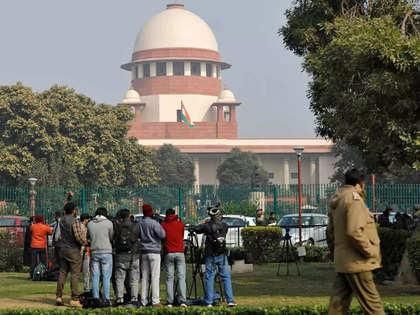 Why in News?
Why in News?
The recent judgement by the Supreme Court addresses the ongoing conflict between the Tamil Nadu Governor and the DMK government regarding delays in the approval of state Bills. The Court established a specific timeframe for the Governor and the President to act on Bills submitted to them and emphasized the necessity of judicial scrutiny when a Governor reserves a Bill for the President on grounds of unconstitutionality.
- The Supreme Court lays down a timeframe for the Governor and President to act on Bills.
- It asserts the need for the President to consult the Supreme Court under Article 143 when a Bill is reserved for constitutional concerns.
Additional Details
- Article 143: This article empowers the President to seek the Supreme Court’s advisory opinion on significant legal questions. The Court's opinion, while not binding, holds substantial persuasive authority and is typically accepted by both legislative and executive branches.
- The judgement aims to prevent potential misuse and delays in the legislative process, ensuring that Bills which may be unconstitutional undergo judicial review.
- The Supreme Court's ruling also highlights the need for preventing the passage of Bills that could be patently unconstitutional, thereby protecting public resources.
- Consultation with the Supreme Court can help mitigate bias or malice in the handling of reserved Bills by the Centre.
- Judicial restraint is emphasized, stating the Court will only examine legal or constitutional questions and avoid interfering in political matters.
This judgement sets a constitutional framework for managing Bills flagged as unconstitutional, clearly defining the roles of the Governor, President, and Supreme Court. It promotes the idea of a pre-enactment judicial review to uphold constitutional integrity while maintaining a balance between judicial oversight and executive authority.
GS3/Science and Technology
Saras Mk2: India's Upcoming Civilian Aircraft
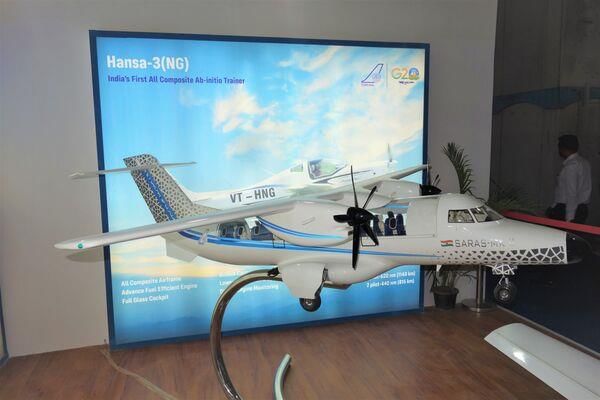 Why in News?
Why in News?
The Saras Mk2, an enhanced version of India's indigenous civilian aircraft, is scheduled for its first test flight in December 2027, as announced by the Director of CSIR-National Aerospace Laboratories (CSIR-NAL).
- The Saras Mk2 is a 19-seater, multi-purpose civilian aircraft.
- It is the first Indian multi-purpose civilian aircraft in the light transport aircraft category.
- The aircraft is being developed by the National Aerospace Laboratories (NAL) in Bengaluru, in collaboration with the Council of Scientific and Industrial Research (CSIR).
- This model is an upgraded version of the earlier Saras Mk 1.
- The aircraft is designed for various uses, including medical emergencies and disaster relief.
- It will facilitate passenger transport from Tier-1 cities to Tier-2 and Tier-3 cities.
Additional Details
- Specifications:
- Weight: 7.5 tons
- Endurance: 6 hours
- Service Ceiling: 29,000 feet
- Maximum Range: 775 km with full load (19 passengers) and 2450 km with 7 passengers.
- Cruise Speed: 500 km/h
- Stall Speed: 185 km/h
- Take-off Distance: 790 meters
- Landing Distance: 740 meters
- Engines: The aircraft will be powered by 2 Pratt & Whitney Canada PT6A-67A turboprop engines.
The Saras Mk2 aims to enhance India's capabilities in the civilian aviation sector by providing a versatile aircraft suited for various operational needs.
GS3/Environment
Revival of Ramgarh Lake
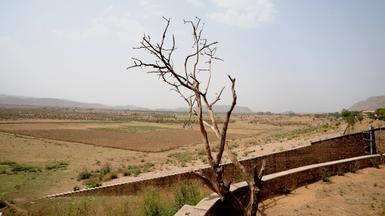 Why in News?
Why in News?
Efforts have commenced to restore the historic Ramgarh Lake, which once played a crucial role in supplying water to Jaipur, Rajasthan's capital.
- Ramgarh Lake is located near the Jamwa Ramgarh subdivision of Jaipur district.
- It was constructed in 1876 by Maharaja Sawai Ram Singh II to support the local population's water needs.
- Currently, four rivers that fed the lake have dried up due to environmental changes.
Additional Details
- Location: Ramgarh Lake is situated approximately 32 kilometers from Jaipur city, covering an area of around 15.5 square kilometers, measuring 2 kilometers in width and 4 kilometers in length.
- Historical Significance: The lake hosted rowing events during the 1982 Asian Games, highlighting its cultural relevance.
- Wildlife Sanctuary: The surrounding thick forests are home to various wildlife species, including nilgai, chital, and lions. The region was designated as a wildlife sanctuary in 1982 by the Government of India.
- The nearby Jamwa Mata temple is located downstream of the lake, adding to the area's cultural significance.
- Polo Ground: The polo ground situated between Ramgarh Lake and the Aravalli Hills is considered one of the finest in the country.
The revival of Ramgarh Lake is crucial not only for ecological restoration but also for the preservation of its historical and cultural significance to the region.
GS2/International Relations
India-Middle East-Europe Economic Corridor (IMEEC)
Why in News?
India and Italy have recently committed to enhancing their strategic cooperation across several vital sectors, including trade, defence, clean energy, and high technology. This reaffirmation occurred during a meeting in April 2025 between External Affairs Minister S. Jaishankar and Italian Deputy Prime Minister Antonio Tajani.
- The discussions focused on strengthening ties through the Joint Strategic Action Plan (JSAP) for 2025–2029.
- The JSAP was initially announced by Prime Minister Narendra Modi and Italian Prime Minister Giorgia Meloni in November 2024.
Additional Details
- India-Middle East-Europe Economic Corridor (IMEEC): This initiative aims to enhance multimodal connectivity to improve trade and transport links among India, the Middle East, and Europe.
- The IMEEC was officially launched via a Memorandum of Understanding (MoU) signed by India, the European Union, France, Germany, Italy, Saudi Arabia, UAE, and the US during the G20 Summit held in New Delhi in 2023.
- IMEEC is part of the broader Partnership for Global Infrastructure and Investment (PGII), initially announced at the G7 Summit in the UK in 2021.
- It is viewed as a strategic counter to China’s Belt and Road Initiative (BRI).
- Structure of IMEEC:The corridor consists of two main sections:
- Eastern Corridor: Connecting India to the Gulf region.
- Northern Corridor: Connecting the Gulf to Europe.
This initiative reflects a significant step towards bolstering international cooperation and enhancing regional connectivity, highlighting India's growing role in global trade dynamics.
GS3/Environment
Rediscovery of Typhloperipatus williamsoni
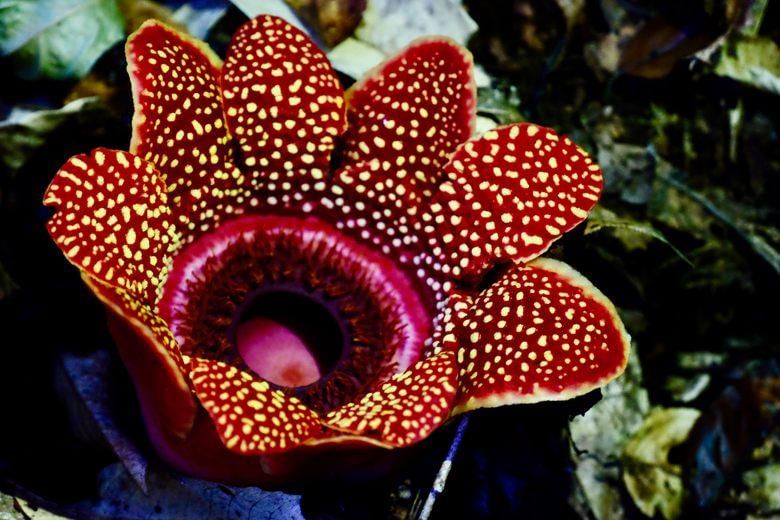 Why in News?
Why in News?
A team of researchers has recently reported the rediscovery of Typhloperipatus williamsoni, a long-lost species of velvet worm, after an absence of 111 years. This species is considered one of the oldest living fossils on Earth.
- T. williamsoni belongs to the phylum Onychophora, an ancient group that has existed for more than 350 million years.
- This species was rediscovered in the Siang Valley of Arunachal Pradesh, India.
- The last documented sighting of T. williamsoni was during the "Abor expedition" in December 1911.
Additional Details
- Evolutionary Significance: The onychophorans, including T. williamsoni, evolved alongside dinosaurs. Many species likely perished during the mass extinction events, leaving only those that survived.
- Molecular Findings: Genetic data suggests that South Asian onychophoras diverged from their neotropical relatives approximately 237 million years ago, with no close relatives found in Australian onychophoras, which is atypical for invertebrates in the region.
- Historical Context: The species was first collected by Stanley Kemp and his team, but there have been no further records from India since that time.
The rediscovery of T. williamsoni not only highlights the importance of biodiversity but also underscores the need for continued exploration and conservation of ancient species.
GS3/Science and Technology
Benefits of Genetic Mapping for the Indian Population
Why in News?
The Genome India project has recently published preliminary findings in Nature Genetics. This initiative aimed to sequence the entire genomes of 10,000 healthy and unrelated Indians from 83 diverse population groups. After excluding two groups, the study analyzed the genetic data of 9,772 individuals, comprising 4,696 men and 5,076 women.
- The project was launched in January 2020 with funding from the Department of Biotechnology.
- It involved the collection of blood samples and phenotype data from participants across India.
- The study identified a total of 180 million mutations, highlighting India’s rich genetic diversity.
Additional Details
- Sampling Strategy: Blood samples and phenotype information (e.g., weight, height, blood pressure) were collected from individuals representing 83 groups, including 30 tribal and 53 non-tribal communities.
- The project involved the collaboration of 20 institutions, including notable centers like the Centre for Brain Research and the National Institute of Biomedical Genomics.
- Samples were gathered from over 100 geographical locations, with a median of 159 individuals in non-tribal groups and 75 in tribal groups.
- Parent-child pairs were included to identify de novo mutations—those appearing in children but not in their parents.
This groundbreaking project addresses the underrepresentation of India's genetic diversity in global genomic studies. It paves the way for enhanced understanding of population-specific health issues and fosters the development of precision medicine tailored to the unique genetic makeup of Indian populations.
GS3/Defence & Security
Bullet Curtain: The World's First Close-In Anti-Drone Barrage Weapon
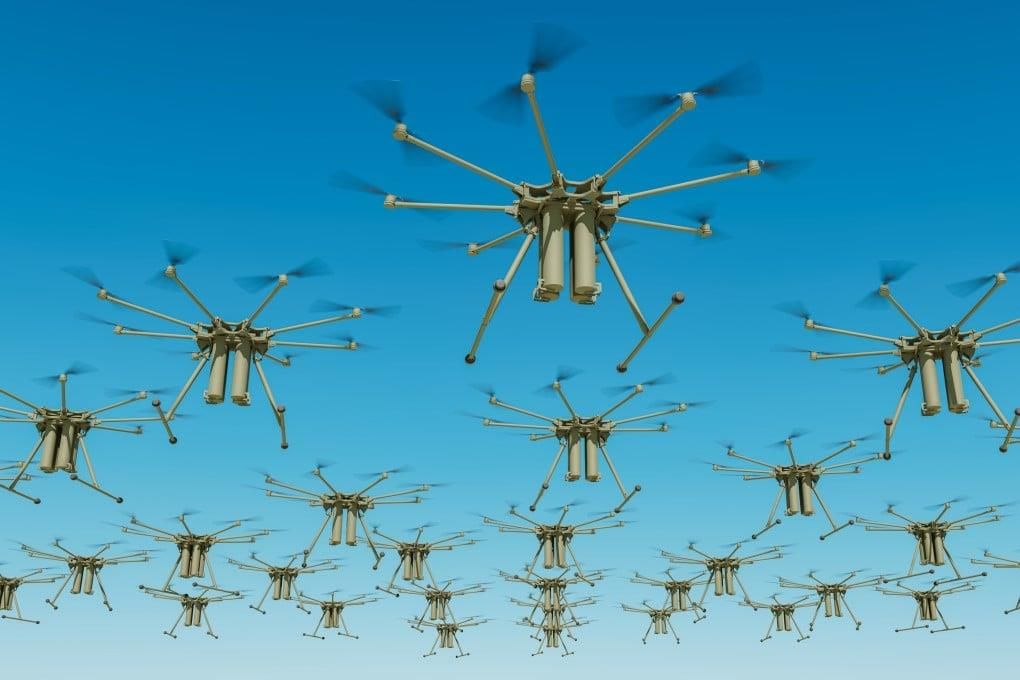 Why in News?
Why in News?
China's state-run defence company Norinco has unveiled a groundbreaking weapon called the Bullet Curtain, which is recognized as the world's first close-in anti-drone barrage system. This innovative technology aims to effectively counter a variety of low-flying aerial threats, especially drone swarms.
- The Bullet Curtain is designed to intercept multiple aerial threats, including drones, missiles, and helicopters.
- This system utilizes a unique firing model that enhances interception capabilities compared to conventional anti-air systems.
Additional Details
- Close-In Anti-Drone Barrage Weapon: The Bullet Curtain employs a "plane-to-point" interception strategy, creating a dense wall of projectiles to overwhelm incoming threats.
- Advanced Features:
- The system incorporates a tight arrangement of 35mm gun barrels for a high rate of fire and rapid reload capabilities.
- It utilizes AHEAD (advanced hit efficiency and destruction) ammunition, which releases hundreds of sub-projectiles to form a protective barrage.
- Equipped with an integrated radar and optical detection system, it ensures precise threat engagement.
- The Bullet Curtain is mounted on a 6x6 truck, allowing for mobile air-defense capabilities that can be quickly deployed within mechanized units.
- Its modular design facilitates integration with various platforms, including armored vehicles, naval ships, and fixed installations, ensuring versatility across combat scenarios.
- A computer-based fire control system dynamically adjusts the type and volume of fire based on the nature of the threat.
The introduction of the Bullet Curtain marks a significant advancement in aerial defense technology, particularly in the context of increasing drone warfare and the need for effective countermeasures against drone swarms.
GS3/Environment
India Supports First Global Carbon Tax to Decarbonise Shipping Sector
 Why in the News?
Why in the News?
India, alongside 62 other countries, has voted in favor of implementing the world's first global carbon tax targeting the shipping industry, an initiative led by the United Nations' shipping agency. This decision marks a pivotal moment in the global effort to combat climate change, particularly in a sector that has not been governed by agreements like the Paris Agreement.
- India supports a global carbon tax on shipping, highlighting international consensus.
- The tax will apply to large vessels and aims to reduce maritime emissions significantly.
- Implementation of the tax is scheduled for 2028, with financial implications for ship operators.
Additional Details
- Background of the Global Tax: Commercial shipping accounts for approximately 3% of global greenhouse gas emissions, yet has been excluded from prior climate agreements. The new carbon pricing system seeks to address this oversight.
- Emission Reduction Goals: The carbon pricing mechanism will require vessels over 5,000 gross tonnage to either switch to cleaner fuel technologies or incur penalties based on their emission levels.
- Financial Impact: According to the agreement, ships will incur costs between $100 to $380 per tonne of CO₂ emitted, with projected revenues reaching up to $40 billion by 2030, aimed at decarbonizing the maritime sector.
- India's Involvement: India joined other nations including China, Brazil, and the EU in favoring this resolution, signifying a collective push towards decarbonization, while oil-producing nations like Saudi Arabia and Russia opposed it.
While this global carbon tax is a significant step forward, experts have raised concerns about its adequacy in meeting climate goals, predicting only a 10% reduction in shipping emissions by 2030, falling short of the IMO's target of 20-30%. Additionally, the allocation of revenues exclusively to the maritime sector has drawn criticism from developing nations that seek broader climate finance support. Moving forward, the policy's operational details, including revenue distribution and compliance systems, are still under negotiation, with formal adoption planned for October 2025.
GS3/Science and Technology
Development of Indigenous rt-LAMP Assay for TB Detection
Why in News?
Researchers at the Sree Chitra Tirunal Institute for Medical Sciences and Technology (SCTIMST) in Thiruvananthapuram have developed an innovative real-time Loop-mediated Isothermal Amplification (rt-LAMP) assay aimed at the early detection of Tuberculosis (TB).
- The rt-LAMP assay is a molecular diagnostic tool offering high sensitivity and specificity, capable of detecting TB DNA with as few as 10 copies per microlitre.
- Unlike RT-PCR, which requires multiple temperature cycles, the rt-LAMP operates at a single temperature, simplifying the testing process.
- Results can be obtained in 10-20 minutes, significantly faster than traditional methods.
Additional Details
- Comparison with RT-PCR: The rt-LAMP assay utilizes six primers for DNA amplification, enhancing the speed and specificity of TB detection compared to the two primers used in RT-PCR.
- The assay employs a fluorescent dye (Syto 16) that does not inhibit the reaction, addressing previous issues of false negatives in earlier LAMP tests.
- The assay has been licensed for industrial production and has received approval from the Central Drugs Standard Control Organisation (CDSCO). The Indian Council of Medical Research (ICMR) is currently validating the technology.
- The World Health Organization’s Health Technology Access Pool (HTAP) is evaluating the test, pending ICMR validation.
This indigenous rt-LAMP assay represents a significant advancement in TB diagnostics in India, potentially bridging the gap by providing a low-cost, rapid, and accurate alternative to outdated smear microscopy techniques. It supports the National TB Elimination Programme (NTEP) by facilitating quicker case detection, thus reducing disease transmission and improving public health outcomes.
|
38 videos|5258 docs|1111 tests
|
FAQs on UPSC Daily Current Affairs: 13th April 2025 - Current Affairs & Hindu Analysis: Daily, Weekly & Monthly
| 1. What are microplastics and how do they affect plants and ecosystems? |  |
| 2. Why is the consultation between the President and the Supreme Court important when a Governor flags a bill as unconstitutional? |  |
| 3. What are the key features of India's upcoming civilian aircraft, Saras Mk2? |  |
| 4. How can the revival of Ramgarh Lake contribute to local ecosystems and communities? |  |
| 5. What is the significance of the India-Middle East-Europe Economic Corridor (IMEEC)? |  |
















